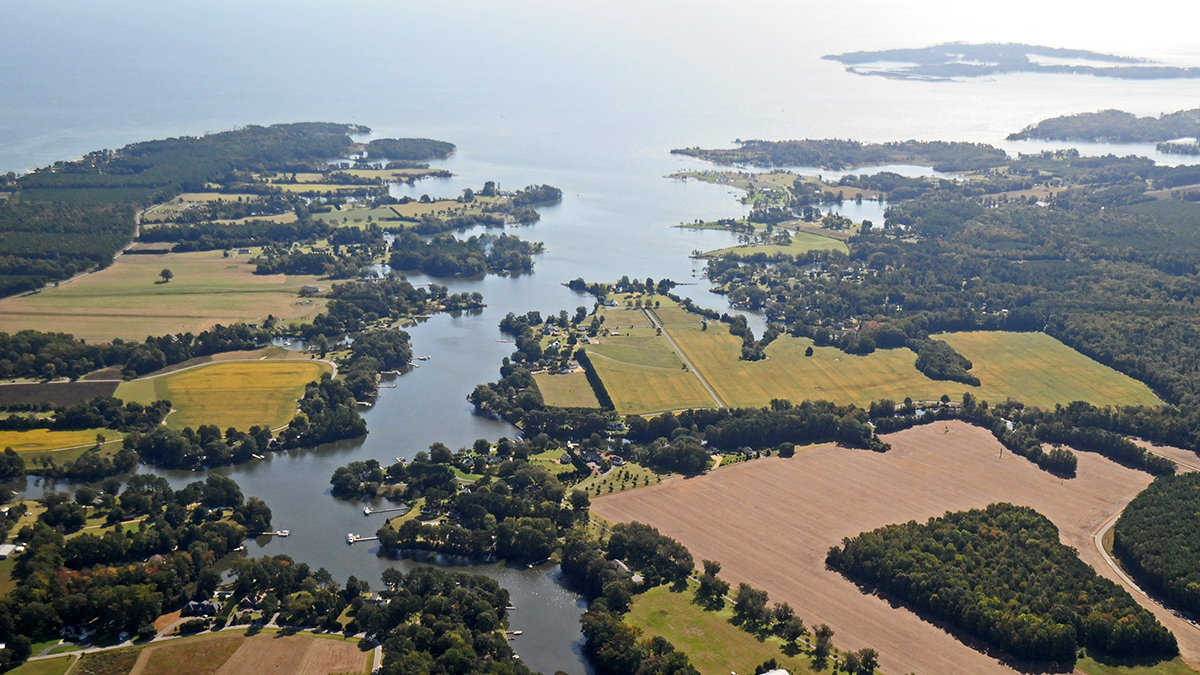Source: AGU Advances
The Chesapeake Bay is the continental United States’ largest estuary, spanning approximately 320 kilometers (200 miles) between northeastern Maryland and Virginia Beach. Like many coastal ecosystems, its water chemistry is affected by agricultural runoff, chemical weathering, and increasing atmospheric carbon dioxide.
Although rising carbon dioxide levels have led to ocean acidification, land use changes and chemical weathering from acid rain have made inland rivers and streams generally more alkaline. But long-term pH trends in coastal waters, such as the Chesapeake Bay, are less clear.
Li et al. ran a simulation to analyze pH trends in the Chesapeake Bay between 1951 and 2010, revealing a complex web of factors that altered the bay’s pH over that 60-year period.
Nutrient runoff into the Chesapeake Bay increased between 1950 and 1980 before dropping in the 1990s, thanks primarily to decreased atmospheric deposition of nitrogen and to upgrades in wastewater treatment systems. Agricultural lime application and intensified chemical weathering, which also decrease acidity, became more common over the study period. In contrast, coal mining, drainage from which can increase water acidity, declined over the study period. Weather played a role as well: Typical spring rainfall, as well as particularly wet decades such as the 1970s, pushed the upper bay freshwater plume farther into the middle of the bay and increased the area’s pH.
The researchers examined all these factors and found that overall, the upper bay generally became more alkaline over time but that deeper waters in the middle and lower bay became more acidic. No long-term trend in the pH of the surface waters of the middle and lower bay was observed, as the effects of river alkalinization and ocean acidification mixed and essentially canceled each other out.
They found that river alkalinization had twice the effect on the Chesapeake Bay’s long-term pH trends compared with ocean acidification. Both processes played a greater role than coastal eutrophication did.
The researchers say their results suggest the potential effectiveness of ocean alkalinity enhancement, a geoengineering technique that adds alkaline minerals to the ocean, for increasing carbon dioxide removal from the atmosphere. (AGU Advances, https://doi.org/10.1029/2024AV001350, 2025)
—Madeline Reinsel, Science Writer


